Treat caries effectively
If the teeth are affected by caries or tooth decay, caries treatment in the dental practice is often unavoidable. Dr. Hager dentists explain when treatment is necessary and how it is carried out.
- Gentle, painless and modern treatment methods
- Early detection and prevention concept
- Minimally invasive treatment and high-quality fillings
- Family practice for 40 years, now in its 2nd generation
Caries treatment: saving teeth affected by caries
Every tooth is coated with enamel. This protects the sensitive inside of the tooth from bacteria and other irritants. Harmful bacteria can attack the enamel and cause tooth decay. If caries progresses unnoticed, the bacteria penetrate the inside of the tooth, known as the dentin, and a painful root infection can develop.
The most important facts in brief:
- A distinction is made between incipient and deep caries: this also influences the type of treatment
- The earlier caries is discovered, the less tooth structure has to be sacrificed
- The defective tooth is restored with a filling so that it is not further destroyed by bacteria
- Caries treatment is carried out under local anesthesia and is therefore virtually painless

Dental plaque can lead to gum loosening. Once the gums are loose, it is easy for bacteria to penetrate deep into the gums and cause lasting damage to the bone.
It is extremely important that the circular gum around the tooth is cleaned correctly once a day. This keeps it tight and cuff-like to the teeth and prevents bacteria from accumulating between them.
The gums show redness, swelling or bleeding when brushing the teeth (possibly bad breath).
The fibers hold the tooth firmly to the bone. If bacteria reach these depths, the dentist speaks of periodontitis and treatment at the dentist is unavoidable.

“Caries is a widespread disease. We specialize in early detection and can therefore prevent many cavities with our preventive concept. If treatment is necessary, our patients receive the most modern and sustainable solutions according to the latest scientific findings.”
Benjamin Hager
How does tooth decay develop?
An unbalanced diet and inadequate gum care promote the development of tooth decay. The cause of this dental disease is an acid-producing plaque, which can be thought of as a tough felt. Bacteria can multiply undisturbed in this plaque and spread on the tooth enamel.
Regular intake of sugary foods stimulates the acid production of bacteria and thus etches a real hole in the healthy tooth substance: so-called caries.
If the plaque is removed from the tooth surface by cleaning the teeth, an ingenious repair system in the saliva automatically heals the holes in the tooth caused by acid. This process is called remineralization and cures caries very effectively. However, if the healing minerals are constantly rinsed away, no healing can take place.
This is also the reason for tooth decay in children: By constantly sucking on a drinking bottle, the repairing mineral layer is constantly washed away. This explains why even sucking on a bottle of pure water causes tooth decay in children.
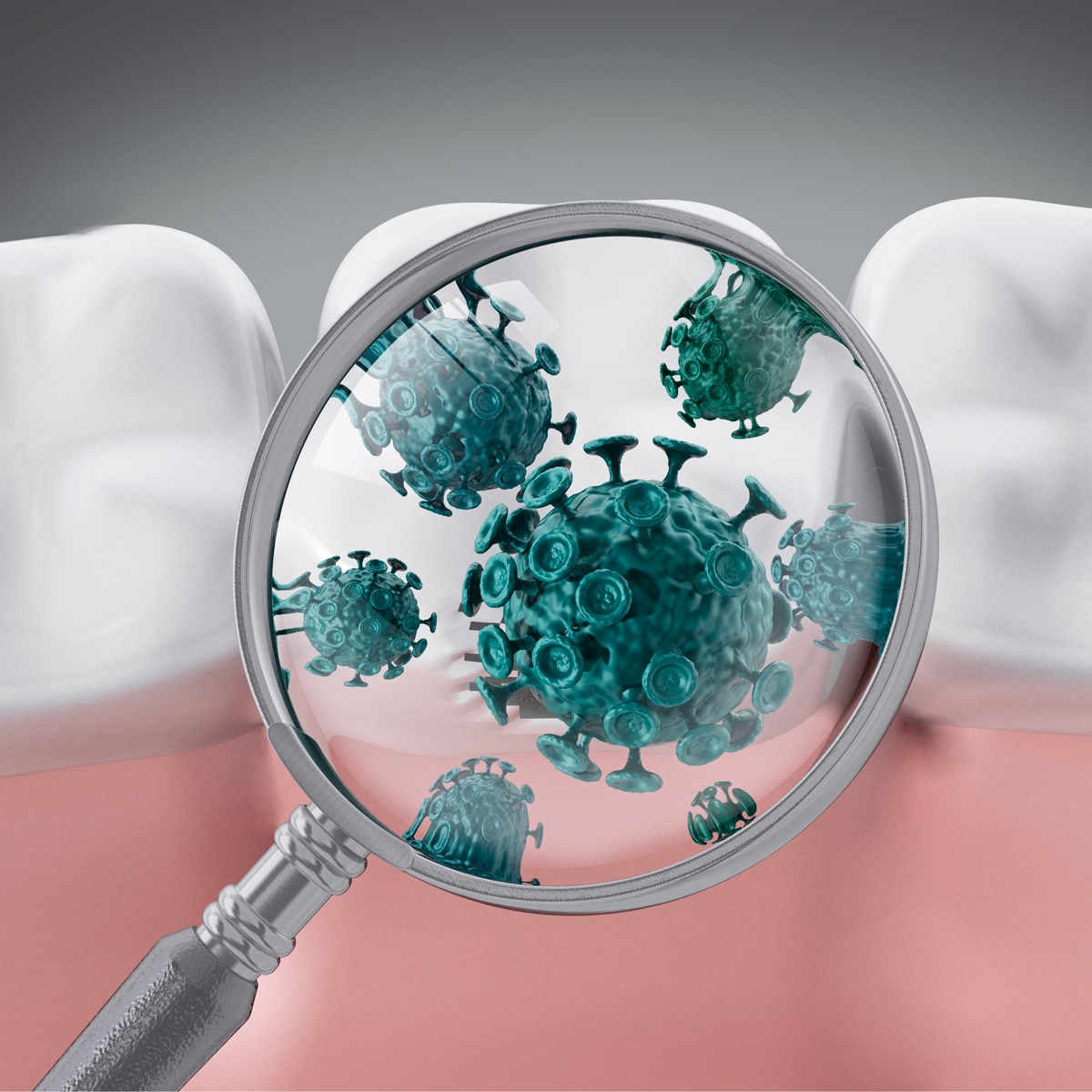
How do you recognize tooth decay?
The detection of caries has changed significantly over the years: Whereas in the past, a metal probe was used to feel for softened areas of the tooth in suspicious areas, caries examinations are now gentler and more comfortable for the patient.
We can now detect caries by using good lighting, illuminating the tooth with a cold light source and, above all, thanks to suitable special X-ray images.
A tooth affected by hidden caries can still be seen there.
In addition, the dentist also uses fluorescent light and coloring with dyes to detect caries.
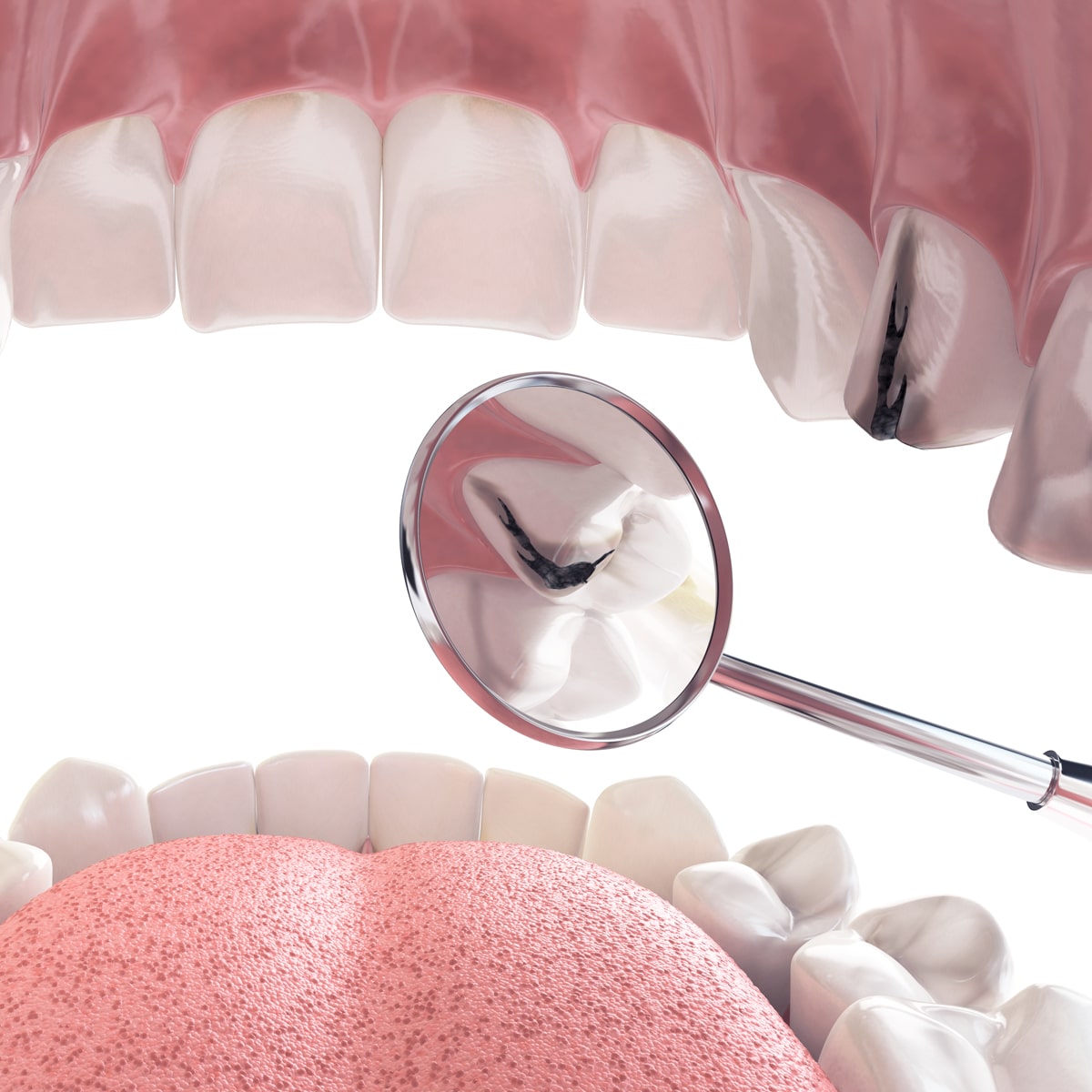
Tooth decay can lead to toothache, sensitivity to cold on the teeth, visible holes in the tooth and, in advanced cases, to the death of teeth and the resulting abscesses.
Tongue coating can indicate a build-up of bacteria, dead cells and food debris. A thick coating can increase the risk of tooth decay as it is a breeding ground for harmful bacteria.
Gentle caries treatment with DR. HAGER
Do you have tooth decay, bad teeth or a cavity? We treat caries painlessly and minimally invasively.
At our dental practice in Bietingen and dental practice in Constance, we use the gentlest, most painless and modern dental procedures possible, high-quality fillings and minimally invasive dentistry to diagnose and treat tooth decay.
How does caries treatment work?

Recognizing caries during dental check-ups
First of all, carious areas must be reliably identified. White and brownish spots or even defects on exposed surfaces are visible to the naked eye and indicate possible caries.
Inflammation of the gums and exposed carious edges of fillings or crowns are also reliably detected by the dentist. However, the visible surfaces are cleaned by the patient anyway during thorough oral hygiene.
The interdental spaces are much more difficult to clean and therefore more at risk, which the dentist can only visualize reliably with x-rays.
If caries is detected, it must be treated depending on its severity. Mild demineralization can even be reversed with good care and fluoride preparations. However, if it extends beyond the enamel into the dentin, it is not reversible and must be treated by a dentist.
Symptoms such as spontaneous pain or sensitivity to cold on the affected tooth can signal that caries is already well advanced. Based on the X-ray image and the clinical picture, the dentist will now make a diagnosis and determine the appropriate treatment.
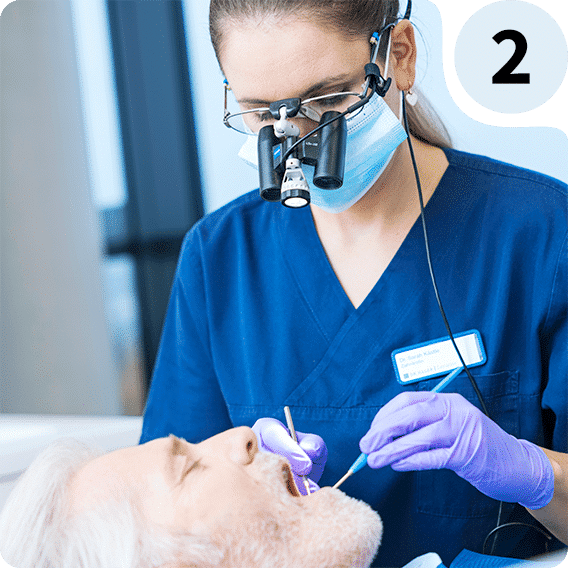
Removal of caries
First, the dentist anesthetizes the affected area to make the procedure painless. After anesthesia, the dentist removes the decayed tooth material. This is usually done with a drill, but can also be carried out using other methods such as lasers or special hand instruments.
The aim is to remove all infected and damaged parts of the tooth in order to stop the spread of caries and maintain a healthy tooth structure.
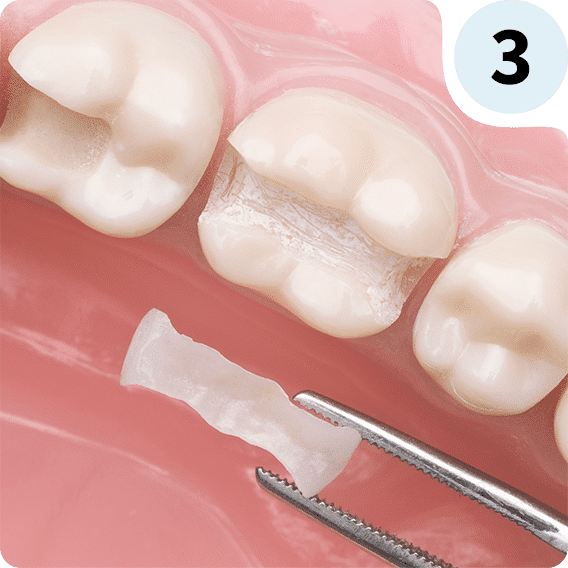
Filling and reconstruction
After the caries has been removed, the resulting cavity is cleaned and disinfected. The tooth is then filled and reconstructed. The dentist selects the appropriate filling material based on the position of the tooth, the size of the cavity and aesthetic considerations.
Finally, the filling is polished to ensure a smooth surface that does not interfere with chewing and does not leave a rough surface that could harbor bacteria.
Filling variants and their advantages disadvantages
If the caries is not detected or removed, there is a risk of tooth loss. At an early stage, the dentist can reliably heal the affected tooth by removing the caries with a drill and sealing it with a filling.
Special treatment is required for late stages. Areas close to the nerve are treated and covered with special materials and medication. A conventional filling is then used on top.
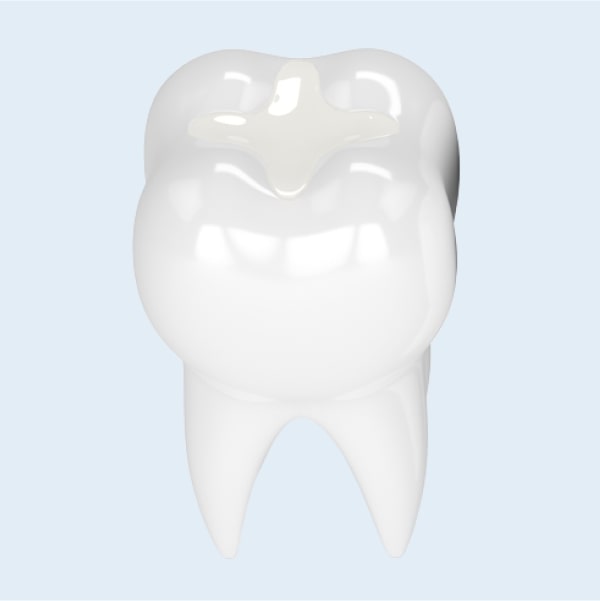
1. The ceramic inlay as the highest quality filling: stable, dense, beautiful. An invention from Switzerland, white & naturally modeled in 3D, just as nature intended.

2. The gold inlay: very durable, dense, risk of fracture of the tooth substance, not beautiful.
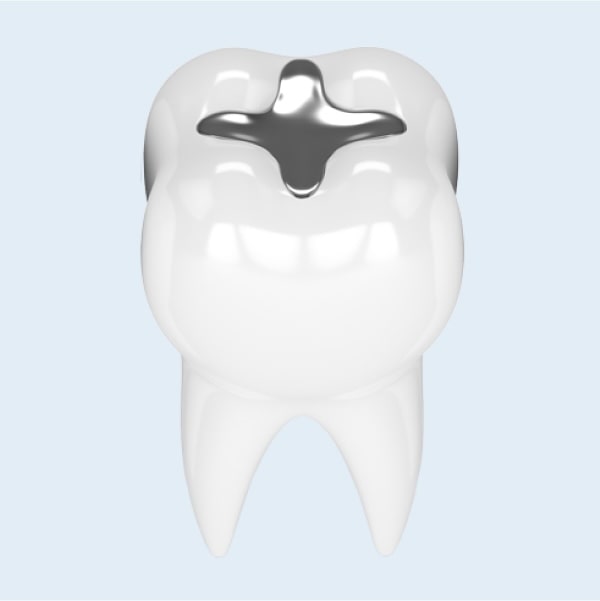
3. Amalgam fillings are considered to be very dense, but unfortunately have disadvantages in terms of compatibility and esthetics, as well as susceptibility to fracture.

4. The composite filling: for the anterior region. However, it has clear deficiencies in the posterior region.
Testimonials from our patients
Regular oral hygiene can cure tooth decay
As described, the body is therefore able to heal superficial cavities naturally on its own. The dentist can also support this with fluoride. Fluoride promotes the repair of developing caries and makes the affected tooth enamel more resistant to acid, resulting in a hard tooth substance.
To effectively prevent the development of caries, it must be ensured that no bacterial plaque adheres to the tooth surface for longer than 48 hours. Otherwise, a particularly dense network of bacteria would form on the tooth, the so-called biofilm or plaque: a veritable biotope of different bacteria that support each other in their destructive work and keep the healing saliva away.
Regular tooth brushing can prevent the formation of this biofilm and the resulting tooth decay. If this plaque is torn apart by the bristles of a toothbrush just once a day, the development of tooth decay can be stopped.
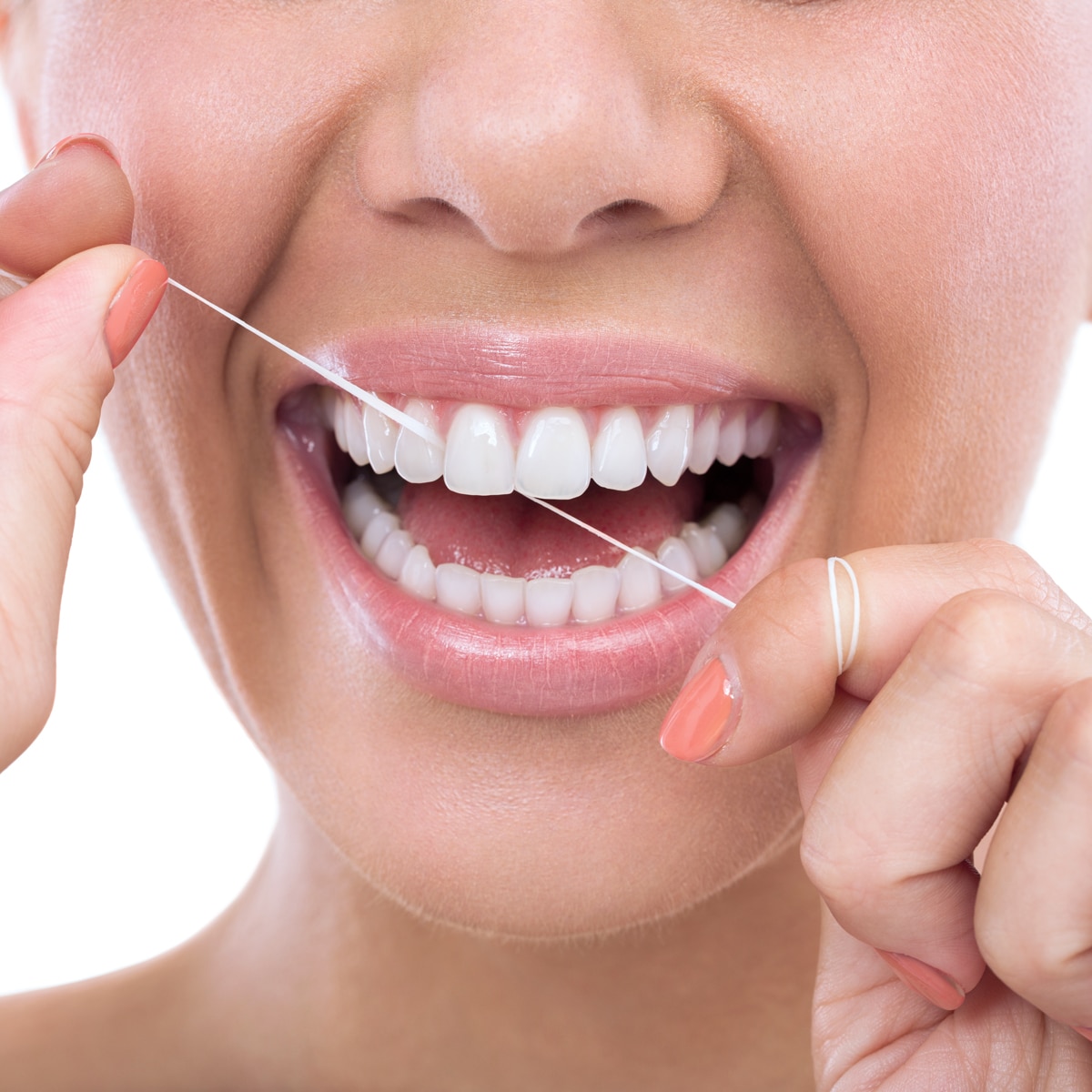
The right cleaning technique
However, this only works if the brushes really reach all tooth surfaces. The right aids, such as interdental brushes and the correct brushing technique, contribute to a considerable improvement in dental hygiene. The DR. HAGER | Dental Hygiene in Constance and Bietingen also provides tips for healthy oral hygiene.
We provide information on how harmful acids in the mouth can be prevented. The patient’s diet and choice of food are a central starting point here. Food that is quickly converted to sucrose should be avoided. A diet consisting mainly of wholemeal bread instead of white bread, mineral water instead of sugary drinks and avoiding snacks between meals keeps the acid value (pH value) neutral. The goal is a regular diet with breaks without food intake.
Regular professional teeth cleaning also helps to detect and remove tartar and plaque that has not been reached. Find out more on the prevention pages.
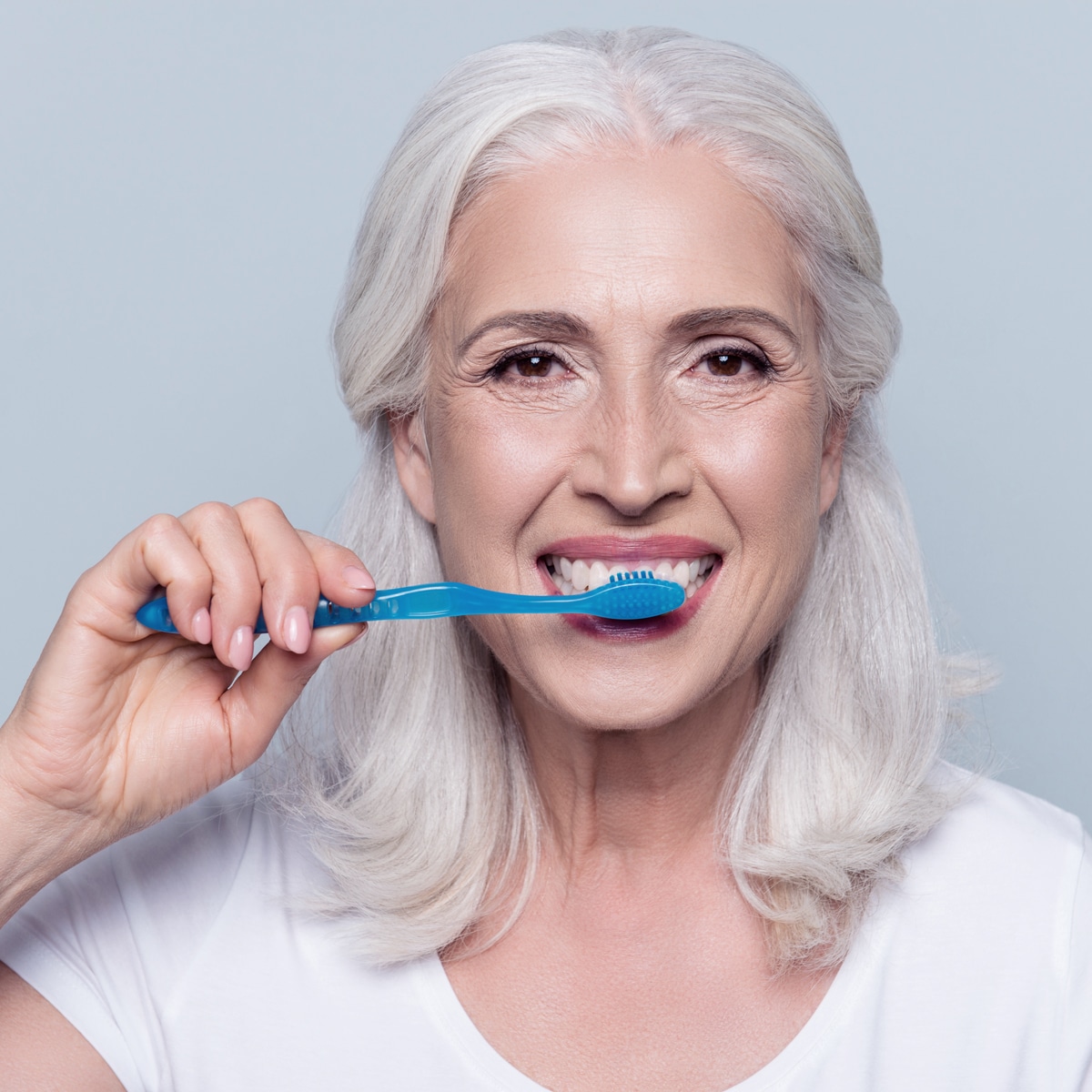
Prevent tooth decay with professional dental hygiene
Incipient tooth decay therefore heals with very good dental hygiene. During our dental hygiene sessions at Dr. Hager Dental Hygiene, we show you an effective cleaning technique and the right cleaning aids for your situation to help prevent tooth decay.
We are also happy to explain how to avoid hidden sugar, which can unfortunately be found in many foods. However, anyone who assumes that only industrial sugar promotes tooth decay is mistaken. Other types of sugar and even organic sugar also promote the development of tooth decay.
Only the sugar substitutes sorbitol, xylitol and fructose have little damaging effect on the tooth due to tooth decay.
However, heredity also plays a major role in the development of tooth decay: we all know people who, despite a complete lack of dental care and a poor diet, do not lose a tooth to tooth decay until old age.
Due to their individual genetic make-up, some teeth have a harder enamel, although this is rare. However, these lucky people usually have problems with their gums instead and suffer from gingivitis or periodontitis and lose many a tooth as a result.

If caries is not treated?
First steps for caries
If caries bacteria are able to carry out their destructive work on the tooth over a long period of time, this caries is no longer repaired by the body. Real holes develop in the tooth enamel, which the dentist recognizes and diagnoses using various methods depending on the case. This is followed by caries treatment, in which the carious areas are removed and the defect is treated with a filling. But don’t worry: this procedure is painless, as a local anesthetic is administered beforehand. After removing the bacteria by drilling with special minimally invasive drills, the tooth nerve can usually be saved.

If caries is not treated
However, if the bacteria that cause tooth decay remain undisturbed and untreated for a long time, they not only destroy the enamel but also the fine structures of the dentin underneath, resulting in deep caries. Dentin is located directly under the hard enamel layer of a tooth and is the last tooth substance before the nerve (dentist: “pulp”). It is also much softer than the tooth enamel, has a porous structure and is quickly decomposed by bacteria. Caries that reaches deep into the dentin always infects the tooth nerve imperceptibly.

Untreated caries can lead to the death of the nerve
Long before pain occurs, the body’s defenses have to fight against the invaders in the dental nerve. It takes months of attack by harmful bacteria without any rescuing dental treatment before the nerve finally dies. A feeling of pressure and pain are now typical symptoms at this advanced stage. Extensive, sometimes dramatic consequences for health are now imminent and require urgent treatment by a dentist.

No fear of the dentist – pain-free treatment
Tooth decay is feared above all because of the toothache associated with it. If the nerve dies, the infection of this tissue by the bacteria can lead to severe inflammation in the tooth, which is often painful. Unfortunately, many people are even more afraid of the dentist after toothache occurs, preventing them from recognizing and containing the caries and its consequences. To encourage you: At our practice, all treatments are done with a gentle and effective anesthetic, even nitrous oxide is available. Pain can thus be effectively avoided.

We look forward to seeing you!
If you have any questions or would like advice on optimal dental care, we will be happy to help you personally. Visit us during our consultation hours at one of our two dental practices in Germany.

and the entire Dr Hager team

Frequently asked questions about caries
How does tooth decay develop?
Caries most frequently occurs in areas of the tooth that are difficult to clean. These are deep recesses, interdental spaces or, above all, at the edge of an old plastic filling. This is because shrinkage of the plastic when the filling hardens creates a microscopic gap into which bacteria can penetrate and cause new caries over time. This is not desirable and is therefore avoided by DR. HAGER | dentists do not offer this in the posterior region. The appropriate solution here is the ceramic inlay.
What is tooth decay?
Caries occurs when the tooth enamel is corroded by caries bacteria. The bacteria sit in the plaque and feed on sugars from food. This sugar from food is converted into acid by the bacteria, which then attacks the tooth enamel. If this happens over a longer period of time, the caries can continue to develop.
Do I necessarily have pain with caries?
Caries does not always cause pain, but the closer the caries defect is to the nerve of the tooth, the more often pain is a possible accompanying symptom. Stringy dental floss after use, sharp edges on the tooth or bleeding gums can also be symptoms. However, tooth decay can also be completely painless. This is why you should make sure you have regular dental check-ups and dental hygiene sessions.
How is tooth decay removed?
Small, pain-limited caries can be rendered inactive by fluoride toothpastes and good oral hygiene, so that it can be observed if necessary. Deeper caries lesions can only be treated by removing the affected tooth tissue (drilling). Our experienced German dentists near the Swiss border use modern, minimally invasive and gentle procedures.
How can tooth decay be prevented?
Good oral hygiene and toothpastes containing fluoride can inactivate small lesions and provide long-term protection against the formation of new caries. A healthy diet also helps to prevent tooth decay from forming so quickly. Regular professional teeth cleaning is also useful in preventing tooth decay.

